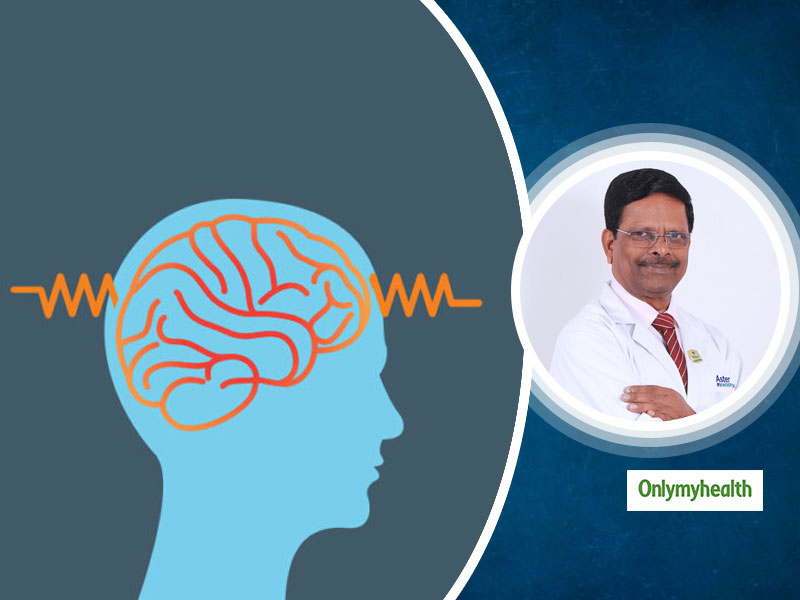
Epilepsy is a neurological disorder that can develop in both males and females. More than 50 million people suffer from this problem globally, according to the World Health Organization. More than 50% of these people do not have access to appropriate facilities and treatment, while about 80% of them reside in developing countries. There are around 10 million epilepsy patients in India. Back in the past, it was thought to be due to spiritual possession, insanity and a bad omen and in many parts of the world, it is believed to be contagious. Individuals with epilepsy face social discrimination, emotional distress, and discrimination in the workplace, schools, and organizations.
Table of Content:-

Also Read: Seizure First Aid: Here's What You Need To Do If Someone Has A Seizure
According to a publication by Dr Sreekanta Swamy, Lead - Senior Consultant, Neurology, Aster RV Hospital, J.P Nagar, Bangalore, The attack occurs because of a sudden onset of excessive electrical activity in the brain. Usually, it lasts for 1-3 minutes. Recurring seizures with/ without a secondary cause is known as epilepsy. During these few minutes, there can be an alteration of sensation, behaviour or level of consciousness.
Often people relate this to mental illness, but this is a brain disorder. It has a neurological root and is chronic. An epileptic attack can be called by different terms such as fits, convulsions, seizures, etc. Some individuals stare blankly for a few seconds during a seizure, while others twitch their arms or legs repeatedly. To determine the duration of treatment and to decide the type of treatment, it is essential to differentiate epilepsy from these for predicting the prognosis. It is called Apasmara in India.

Triggers that are common in epileptic seizures are:
- Stressed out emotionally
- Lack of sleep
- Visual flickers
- Irregular medication
There are a few of the essential and preventable causes of epilepsy which are- infections, birth injuries stroke and head trauma. It can also be due to hereditary or family history. Epilepsy can happen to all age groups but can be commonly observed in a child and at old age. To diagnose epilepsy correctly, few checkups are required like MRI/CT scan of the brain, EEG(electroencephalogram) and few blood tests. No definitive cause can be demonstrated in nearly 70% of these sufferers. However, patients can lead a seizure-free life if they respond to drugs.
There are different types of treatment available to cure epilepsy:
- Medications (more than 20-25 different medications)
- Surgical
- Nonpharmacological ( ketogenic diet, vagal nerve stimulation, etc.)
- These medications would be needed for a long time and cannot be cured instantly. Around 30% of affected people might not get the full benefit of the drugs. Before giving drugs, brain surgery and vagus nerve stimulation therapy are considered.

Also Read: There Are 150 Types Of Headaches, And Sinus Headaches Is One Of Them. Here’s What You Need To Know
What to do when someone gets an epileptic attack?
Follow these steps:
- Roll the patient to one side and don’t try to stop it.
- Make sure you protect them from injuries
- Avoid putting anything in the mouth
- Loosen the clothes and allow ventilation
- Consult a doctor immediately if the symptoms of recurrence of seizures come up.
- Advice to patients and caregivers
- Visit a professionally qualified doctor and get examined.
- Give the patient medications regularly
- Have a proper timetable and sleep
- Do not stop their medications abruptly
- Try not to overprotect them, instead of support and encourage when necessary.
- Avoid the patient’s driving, swimming alone, or handling on machines while on medication.
- If frequent seizures come up, inform their family members about the seizure and medications
- Avoid night shifts work
- Mothers who are epileptic patients can breastfeed their babies while taking medication.
Read more articles on Other Diseases
Read Next
NO! India Hasn’t Entered The Third Stage Of Coronavirus Transmission, Clears Government of India
How we keep this article up to date:
We work with experts and keep a close eye on the latest in health and wellness. Whenever there is a new research or helpful information, we update our articles with accurate and useful advice.
Current Version